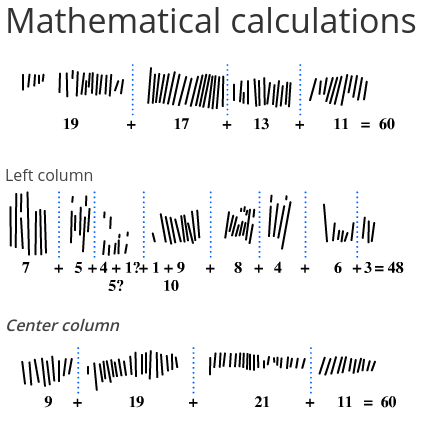Welcome to the first era of Black history I’ll be covering in this Black Studies series I’ll be running for the entire month of February.
*Quick disclaimer*
I’m not an anthropologist, and a lot of the information I’ll be covering in this piece is still somewhat new for me. With that said, I will be linking to several sources of information you can use to one proof what I’m claiming and to further your own understanding in this area of study.
This will be a very high-level view of the Ancient African Paleolithic Period.
We Were The First
I know for a lot of my Bible believers (whichever version of the Bible you believe in) it’s tough to hear people talk about the Earth being older than 4,000 or 6,000 years old. So if you happen to believe that, then consider this your trigger warning.
*Sidenote*
The honorable brother Yosef Ben-Jochannan taught us that the three main religions we know today all originated in Africa and have since been stolen and rewritten in such a manner that it excludes our true history and contributions to religion and civilization. I’ll drop links to some of his books that help support his theory in hopes that it will lead you to a journey of truth you won’t find in Western education.
Dr. Yosef Ben-Jochannan Books on the Black Men’s Religion:
- A Chronology of the Bible: Challenge to the Standard Version
- African Origins of Major “Western Religions”
- The Myth of Genesis and Exodus and the Exclusion of Their African Origins
- The Need for a Black Bible
Science tells us that the oldest remains of what we’d consider to be “modern-day man” also known as Homo sapien (Homo sapiens sapiens is the name given to our species if we are considered a sub-species of a larger group) date as far back as 200,000 to 250,00 years ago.
I thought it would be appropriate to start our Black Studies series here because I wanted to focus on one scientific find that might shock a lot of you…
We All Have a Common Ancestor…
The origins of humanity can be traced back to Africa, with Homo sapiens found in Africa’s Great Rift Valley about 200,000 years ago.
We’ve all heard the story of Adam and Eve, right? Well, what if I told you scientists have found Eve???
Scientists and anthropologists call her Mitochondrial Eve, but she’s better known as “African Eve.”
According to Science Daily, the most robust statistical examination to date of our species’ genetic links to “Mitochondrial Eve,” the maternal ancestor of all living humans. Yes, you read that correctly… “Maternal ancestor…” That means all of us, Black, White, Brown, Yellow, or whatever complexion you are, came from this woman.

Mitochondrial DNA found in our cells is the genetic signature that passes from mother to child. Mitochondrial Eve was a woman who had enough daughters in a continuous chain that her Mitochondrial DNA survived.
Homo sapiens eventually migrated across the African continent around 120,000 years ago. It is only between 80,000 and 50,000 years ago that some common ancestors began to leave the continent entirely.
This discovery came from a study commenced by Rice University and was based on a side-by-side comparison of 10 human genetic models that each aim to determine when Eve lived using a very different set of assumptions about the way humans migrated, expanded and spread across Earth. The study also confirms that “African Eve” lived about 200,000 years ago in Lower East Africa.

East Africa just so happens to be the same area scientists and anthropologists found the Lucy specimen which is an early australopithecine and is dated to be about 3.2 million years old.
The research conducted by Rice University is available online in the journal Theoretical Population Biology.
Check out this clip from Dr. Asa Hilliard the III’s two-part mini docuseries, Free Your Mind: Return to the Source AFRICAN ORIGINS for a more complete breakdown of all this knowledge.
The Untold Technical Advancements of the Stone Age
First things first, let’s clear up what the fuck the Stone Age is. The Stone Age is can be divided into three different periods.
- Ancient Old Stone Age which dates back to the first production of stone artifacts, about 2.5 million years ago
- Next comes what is known as the Lower Paleolithic (roughly around 40,000 BC)
- Last comes the Upper Paleolithic (40,000–8000 BC)
Usually, when we think of the stone age we thnk of musclebound beings living in caves and shit. You know, your typical caveman shit. We also tend to believe the tools used during the Stone Age were fairly primitive compared to today’s technology. Well, allow me to disprove some of that bull shit by introducing the world’s first calculator, which of course, was created by Black people…
The Ishango Bone: Cradle of Ancient Mathematics
What if I told you Africans in the Congo made the world’s first calculator over 20,000+ years ago?
You’d probably think I was on some conspiracy theory type shit or something right? Well, get ready to learn some shit you probably never knew.
Dating back as far as 20,000 – 22,000 years ago, the Ishango bone is a dark brown bone which happens to be the fibula of a baboon, with a sharp piece of quartz affixed to one end for engraving.

It was first thought to be a tally stick, as it has a series of what has been interpreted as tally marks carved in three columns running the length of the tool, but some scientists have suggested that the groupings of notches indicate a mathematical understanding that goes beyond counting
It is the oldest attestation of the practice of arithmetic in human history.

The Belgian geologist Jean de Heinzelin de Braucourt uncovered the bone buried in layers of volcanic ashes on the shores of Lake Edward in the Ishango region in DRC, near the border with Uganda.
 The Ishango bones are actually two (2) bones of a baboon, 10 to 14 cm long, with several incisions on each face. The smallest of the two bones was the first to be exposed to the Royal Belgian Institute of Natural Sciences in Brussels; it carries several incisions organized in groups of three columns.
The Ishango bones are actually two (2) bones of a baboon, 10 to 14 cm long, with several incisions on each face. The smallest of the two bones was the first to be exposed to the Royal Belgian Institute of Natural Sciences in Brussels; it carries several incisions organized in groups of three columns.
The left column can be divided into 4 groups, with each group possessing 19, 17, 13, and 11 notches. The sum of these being 60. Those are the 4 successive prime numbers between 10 and 20. This constitutes a quad of prime numbers.
The central column is divided into groups of 8. By an approximate count, one can find (in the parenthesis, is the maximum number): 7 (8), 5 (7), 5 (9), 10, 8 (14), 4 (6), 6, 3. The minimal sum is 48, while the maximal sum is 63.
The right column can be divided into 4 groups, where each group has 9, 19, 21, and 11 notches. The sum of these 4 numbers is 60.

The second bone has not been well-studied. However, we know that it is composed of 6 groups of 20, 6, 18, 6, 20, and 8 notches.
Check out this quick clip from CNN when they discuss the history and importance of the Ishango Bone.
Reclaiming Our History
This is Black History. Even though this isn’t what’s normally feed to us as “Black History,” trust me, it is. Throughout this week I’ll be taking us from here, to the once Green Sahara, and then ending the week off in one of my favorite time periods of Black History, Ancient Kush and Kemet. Until then, continue to spend your Black History Month learning true Black History.



Thanks for sharing! https://cchomeschoolers.com/blog/
LikeLiked by 1 person